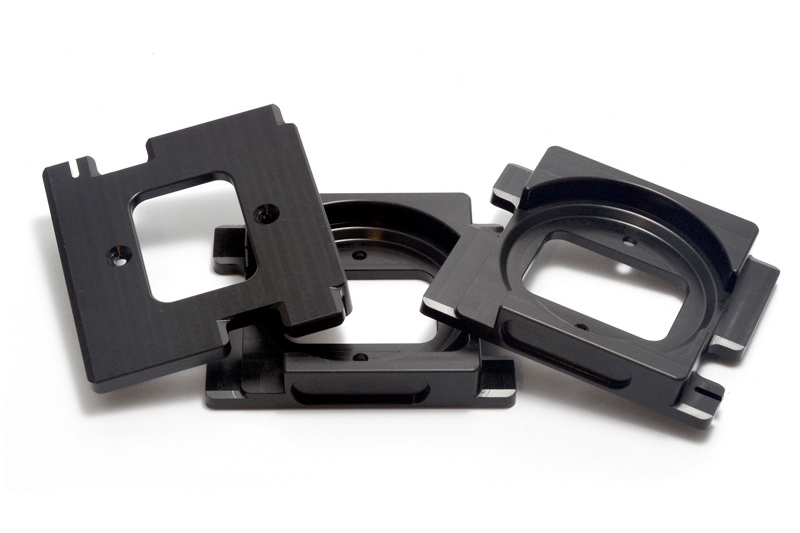Crafting the Future: CNC Machined Parts in Consumer Electronics for High-Precision Components
Introduction
CNC machining has become integral to consumer electronics, empowering manufacturers to create precise, intricate, and aesthetically appealing components. As consumer devices become smaller, smarter, and more sophisticated, CNC machining ensures consistency, reliability, and superior quality.
Leveraging advanced CNC machining manufacturing, consumer electronics manufacturers achieve unparalleled precision, enabling sleek, lightweight designs that meet stringent performance standards. CNC technology propels innovation, setting new benchmarks for consumer products worldwide.
CNC Machining Steps
Product Design & Prototyping: Detailed CAD modeling to refine precise consumer electronics designs.
Material Selection: Optimal materials are selected to enhance durability, aesthetics, and functionality.
Precision Manufacturing: CNC machines create highly precise electronic components.
Quality Control: Rigorous inspection and testing validate final component accuracy.
Materials: Material Solutions for Consumer Electronics
Material choice significantly influences product performance, durability, and aesthetics. Below are common materials used in consumer electronics CNC machining:
Material | Properties | Advantages | Applications |
|---|---|---|---|
Tensile Strength: 310-700 MPa Yield Strength: 280-500 MPa Density: 2.7 g/cm³ | Lightweight, excellent machinability, superior thermal conductivity, aesthetically appealing finish | Smartphone cases, laptop housings, camera bodies | |
Tensile Strength: 500-1,500 MPa Yield Strength: 250-1,200 MPa Hardness: 150-350 HB Excellent corrosion resistance | Robust, durable, high corrosion and wear resistance, premium aesthetic | Smartwatch casings, premium headphone components | |
Tensile Strength: 40-110 MPa (PEEK), 40-60 MPa (ABS), 55-75 MPa (PC) Density: 1.05-1.32 g/cm³ | Excellent electrical insulation, lightweight, versatile for complex shapes, good chemical resistance | Internal electronic housings, connectors, wearable devices | |
Tensile Strength: 300-550 MPa Yield Strength: 150-350 MPa Density: 8.4-8.7 g/cm³ | Excellent electrical conductivity, corrosion resistance, aesthetic finish | Connectors, contact points, decorative electronic components |
Surface Treatment: Enhancing Consumer Electronics Durability
Anodizing
Functions: Anodizing enhances aluminum durability, aesthetics, and corrosion resistance by creating a protective oxide layer.
Key Features: Surface hardness up to 400 HV, customizable color finishes.
Applications and Scenarios: Smartphone cases, tablet frames, audio equipment housings.
Electropolishing
Functions: Electropolishing improves surface smoothness, enhances corrosion resistance, and delivers a mirror-like finish.
Key Features: Achieves surface roughness down to 0.1 µm, superior aesthetic quality.
Applications and Scenarios: Smartwatch casings, premium audio device components, and camera accessories.
Powder Coating
Functions: Powder Coating protects against scratches, abrasion, and environmental damage.
Key Features: Uniform coating thickness (50-120 µm), exceptional durability and vibrant finishes.
Applications and Scenarios: Speaker enclosures, external electronic housings, durable consumer device frames.
Physical Vapor Deposition (PVD)
Functions: PVD offers durable, decorative, and wear-resistant metallic finishes.
Key Features: High hardness coatings up to 2,000 HV, scratch-resistant metallic appearance.
Applications and Scenarios: Smartphone decorative trims, watch components, luxury electronic device parts.
CNC Machining Process Comparison
Each CNC machining method has distinctive strengths suited for various consumer electronics applications:
Process | Key Features | Application Scenarios |
|---|---|---|
Precision: ±0.0025 mm Capable of intricate 3D geometries Versatile tooling options | Smartphone casings, camera frames, complex device enclosures | |
Precision: ±0.0025 mm Ideal for cylindrical and symmetrical parts | Audio device knobs, precision connector pins, cylindrical device housings | |
Precision hole accuracy ±0.0025 mm Efficient multi-hole drilling capabilities | Device internal frames, precision PCB enclosures, heat dissipation holes | |
Precision surface finish up to 0.1 µm High dimensional accuracy | Ultra-smooth surfaces for wearable device components, precision audio components | |
Precision: ±0.0025 mm complex features Flexible multi-axis production | Complex and curved designs, ergonomic handheld devices, intricate wearable components |
Considerations in Production
Material Selection and Durability: Select materials ensuring device longevity, weight reduction, and performance stability.
Tolerance Control: Strict quality assurance and machine calibration for precision and consistency.
Thermal Management: Proper thermal control and selection of materials to minimize thermal deformation during machining.
Surface Finish Quality: Implement post-processing such as anodizing, PVD, or polishing to achieve high aesthetic and functional standards.
Industry and Applications
CNC machining plays a vital role across diverse sectors of consumer electronics:
Consumer Products: Smartphones, tablets, wearables, home entertainment systems.
Robotics & Automation: Smart home automation systems, drones, robotic personal assistants.
Medical Devices: Precision parts for personal healthcare electronics and medical wearables.
Automotive Electronics: Infotainment systems, automotive sensors, precision dashboard components.
Industrial Equipment: Precision electronics enclosures, sensor housings, and control panels.
FAQs
How does CNC machining enhance precision in consumer electronics components?
What are the most common materials used in CNC machining for consumer electronics?
Which surface treatments are most beneficial for consumer electronics components?
How does multi-axis CNC machining support innovation in consumer electronics?
Why is CNC machining preferable for producing high-quality consumer electronic parts?

